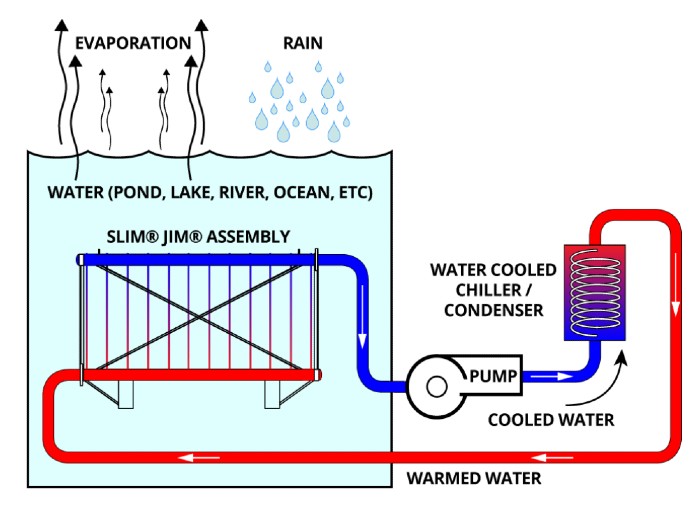It is well known that for residential and medium building´s sizes geothermal is an interesting heat source available almost worldwide with different constant temperatures always warmer than air.
These characteristics could provide for a long period an efficient heat pump design taking advantages over other technologies.
Now demand growing and new geo exchangers design could increase large geothermal heat pump demand over the actual maximum sizes.
On the same way than 5th District Heating generation, promote the cooling and heating simultaneity objective this technology could help to store heating dissipation in summer time and cooling capacity during wintertime. If both duty are required the exchange time and cycle, life will increase drastically.
Geoexchange technologies: How to make scalable these systems
The ground water heat pump will be coupled to different geo exchange systems to create a closed water loop system in contact with the ground; like a cave, this ground temperature is warmer than the air above it during the winter and cooler than the air in the summer.
When the fluid is colder than the ground, the heat source from the ground is transferred into the fluid. Conversely, if the fluid is much warmer than the ground then the heat from the fluid is transferred into the ground. A propylene glycol solution is circulated throughout the piping via circulation pumps.
The most common and scalable technologies to be employed in large heat pump will be:
- Horizontal geo pipes exchange: The HDPE coil or pipe are buried in the ground in horizontally slinky loops.
- Vertical borehole: This system could be installed in a building basement to reduce surface need. For a vertical system, holes are drilled about 6 meters apart and 150 meters deep. Into these holes go two pipes that are connected at the bottom with a U-bend to form a loop. The vertical loops are connected with horizontal pipe connected to the heat pump.
- Geo plate exchangers: This type of below plate heat exchangers are submerged in ponds, river or sea to use it as heat source or heat dissipation media employing the water temperature approach evolution during the periods of the year. Is a cost effective system reducing space need.
All these systems are achievable for large heat pump systems obtaining relatively interesting efficiency on the heat pump systems during whole year.
At the same time in several countries like UK or Spain new life and applications are growing to reuse old mine to flood them and use this direct system (open loop) as heat source or heat dissipation media with large heat pumps.

The main benefits to employ these technologies are:
- Increase dual operation mode for heat pump as cooling and heating depending the season or as simultaneous.
- Improve the efficiency for large-scale heat pump instead to employ air source heat pump with large space requirements.Mai
- ntain low cost tubes material on heat pump heat exchanger with glycol intermediate loop
Why large-scale geo exchange heat pump implementation are a clear alternative to large air source HP?
Geothermal energy is almost in development since middle of the 20Th century for residential market and have been developed their own products (piping coil, pillow HX, etc,) to be adapted to large-scale systems.
The different system could be combined to increase the life cycle of the geothermal system.
Large drilling companies are now focus on this new market for us due to the Oil & gas extraction reduction for the next 20 years. The geothermal development could reduce their investment cost and increase the size of the companies dedicated to the heating and cooling applications.
Depending on the regions where we will develop these methods, it will be more effective and efficient but for a 25 years system life but the extra cost investment will be more reliable than air source type heat pump.
Main reasons to promote geothermal HP instead Air source HP:
- Lower footprint demand
- More efficient during winter time and reversible for summer time
- No defrosting system needed employing glycol solution










